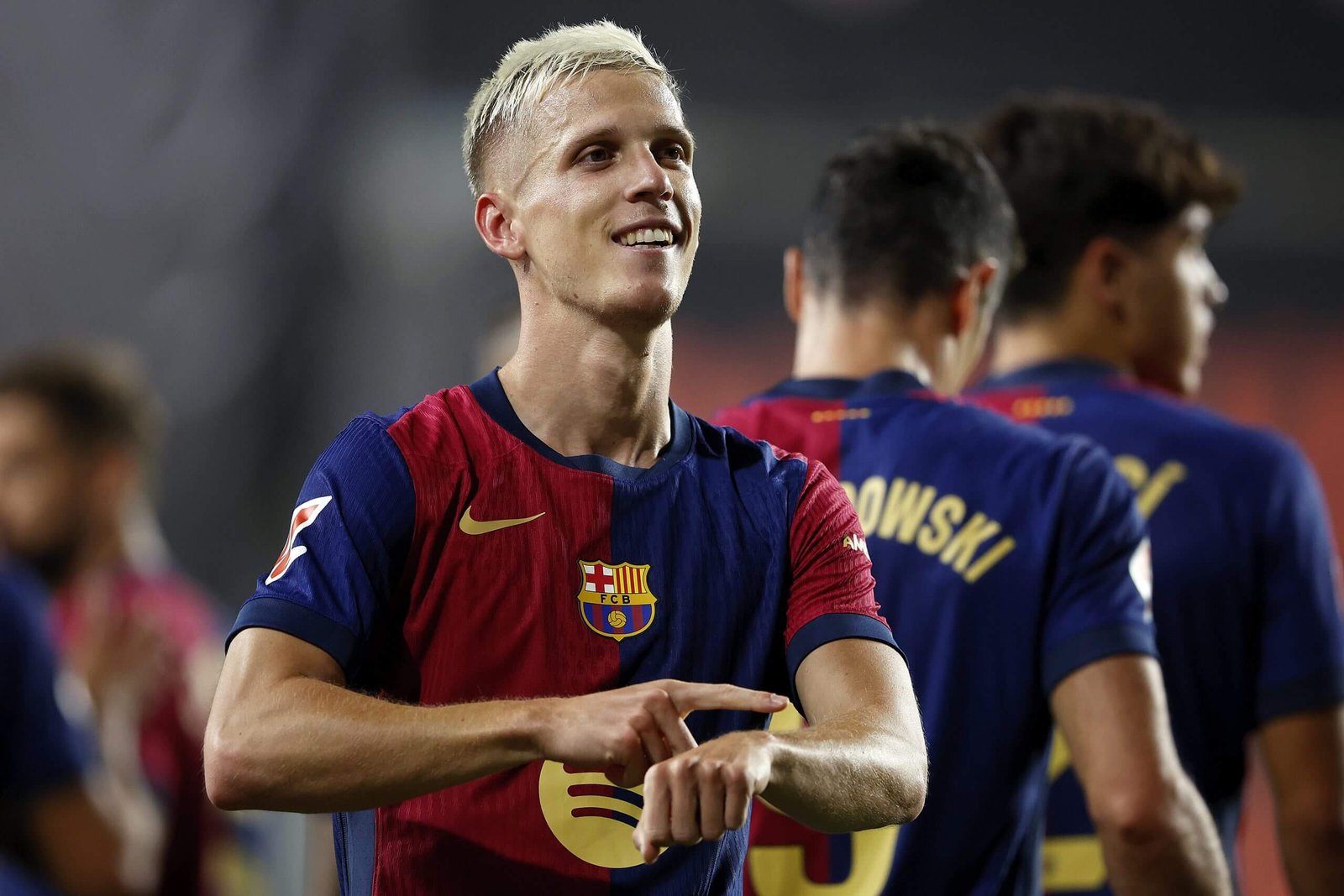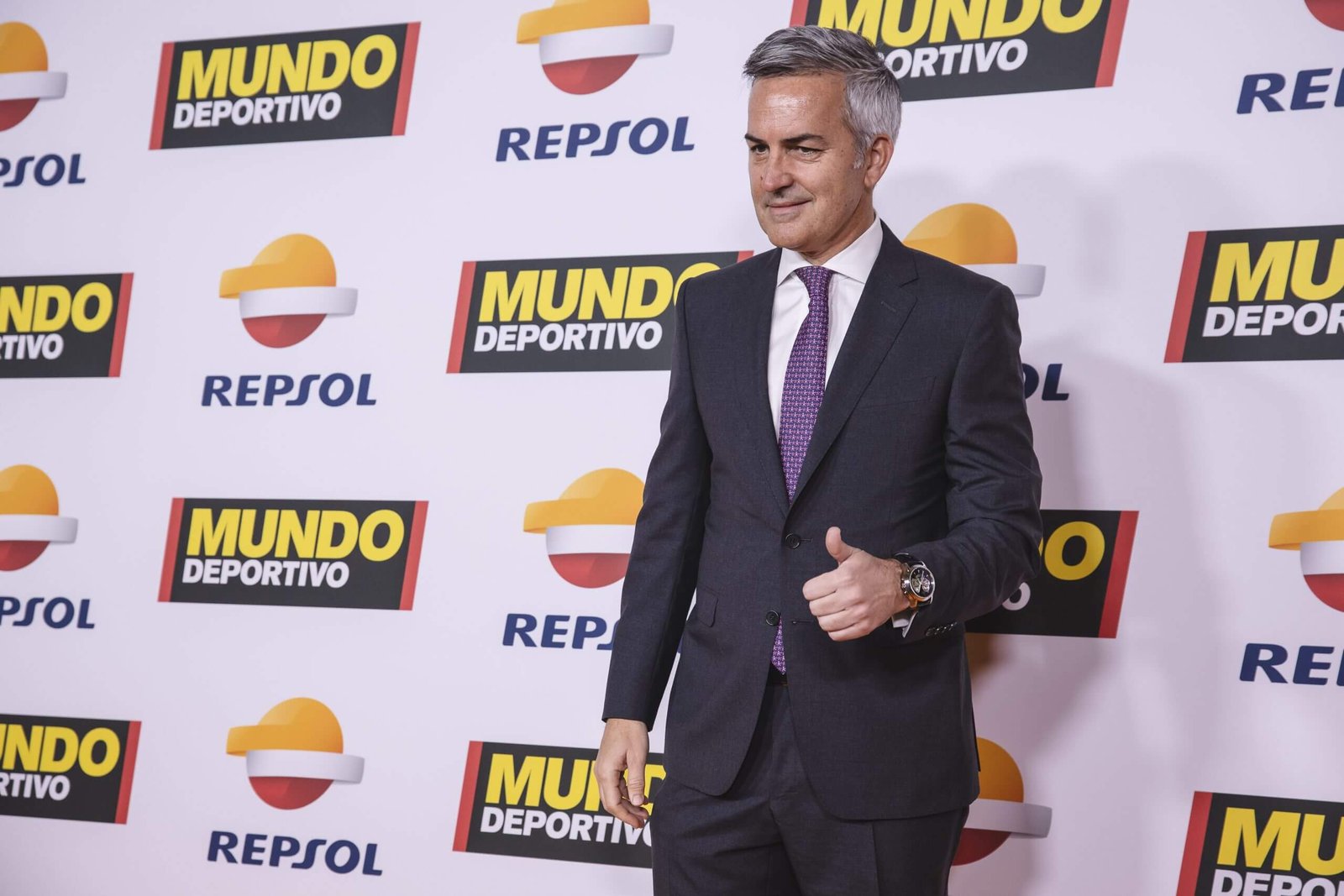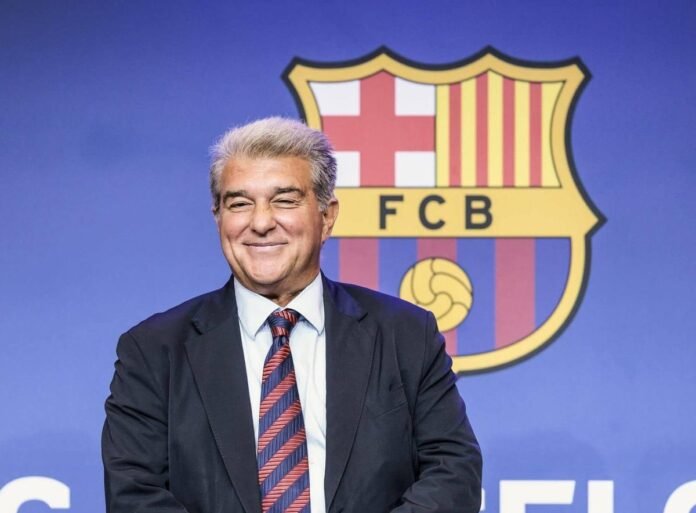Barcelona announced their annual accounts for the 2023-24 season this week, showing progress has been made in fixing the club’s long-standing financial issues.
For the first time since current Barca president Joan Laporta replaced Josep Maria Bartomeu in March 2021, the club’s ‘ordinary’ accounts (their income and expenditure over the year) show that the books were balanced during 2023-24, meaning the Catalans have finally started to live within their means.
But the annual accounts also show how complications from the ‘levers’ policy championed by Laporta are unresolved and continue to weigh down the club.
So Barca’s difficulties registering players within La Liga’s salary limit remain — meaning €60million ($66m; £50m at current exchange rates) summer signing Dani Olmo could find himself in limbo after the Spanish top-flight’s winter break if more work is not done.
The Athletic explains.
What did Barca say in their statement?
Barca held a board meeting on Monday to approve the finalisation of the club’s 2023-24 accounts and the projected budget for 2024-25 — so it could be sent for approval by the club’s socios (or members, who own the club) at their annual assembly, a date for which was announced on Thursday — October 19.
“During the meeting, FC Barcelona President Joan Laporta wished to stress that the club has managed to halt the economic decline of recent years and confirmed the forecast of positive ordinary profits of €12million,” read a statement released on Monday evening.
It then listed key highlights including “new all-time sponsorship revenue record of more than €210million”, “record turnover of the merchandising subsidiary, BLM (Barca Licensing & Merchandising), of nearly €110m” and “record profits from player transfers”.
There was also a “€170million reduction in payroll” — meaning the club’s total wage bill fell from €670m in 2022-23 to just over €500m last season.
But it said that temporarily playing at the Estadi Olimpic Lluis Companys while the Camp Nou is rebuilt had led to a drop of “over €100million” in revenue from matchdays and the club museum.
The Camp Nou under reconstruction (Joan Valls/Urbanandsport/NurPhoto via Getty Images)
Then came the kicker — an acknowledgement the club had to accept a loss of €141million before taxes due to issues with its Bridgeburg Invest subsidiary (also known as Barca Vision).
Which means they suffered an actual overall net loss of €91million in the provisional accounts — not the €12m profit which was claimed.
What does that say about Barca’s current financial situation?
Barca have made some real steps forward in recent years in trying to deal with the historical problems inherited in March 2021 from the previous board, headed by Bartomeu.
Revenues from sponsorship and merchandising have grown, while significant cuts have been made to the club’s wage bill. Among those to have left are previous high-earners Lionel Messi, Gerard Pique, Antoine Griezmann, Ousmane Dembele, Jordi Alba and Sergio Busquets.
But Barca have also continued to sign expensive players, including European Championship-winning Spain midfielder Olmo this summer.
So they are still on a financial tightrope and revenue from player sales is vital to balance the books each year. The 2023-24 final figures were improved by selling young striker Marc Guiu to Chelsea for €6million and receiving €9m when defender Chadi Riad joined Crystal Palace, just before the end of the financial year on June 30.
The ‘levers’ policy of selling shares in club assets (such as future TV revenues) to provide upfront cash continues to cause problems. The biggest issue in the 2023-24 numbers is that the club’s auditors have forced the valuation of its Barca Vision subsidiary to be written down.
What does it mean that Barca Vision was written down?
Barca Vision is a club subsidiary company that includes their current and future media rights and activities, in which shares have been sold to external investors to raise money. Since being launched in August 2022, it has gone through different names and brands — including Barca Studios and Barca Media.
The Catalan club have a 51 per cent share of Barca Vision — with other investors including Socios.com, Orpheus Media, Libero, Vestigia and the club’s catering partner, Aramark.
The 2022-23 accounts counted Barca Vision as an asset worth €400million — basing this off the public amounts investors committed to paying for their shares. But this valuation was always optimistic, as much of the money promised by external investors has never arrived.
Barca’s auditors have asked for a €141million loss in the new accounts as a result. The club have retained the valuation of their 51 per cent share — even though it is difficult to see how this valuation can be realistic given the auditors have ordered the remaining 49 per cent be written down.
Barca’s statement said the write-down was just a “precaution” but this looks an unsustainable situation. Either new investors are found to come in and provide the money which Libero, Socios.com and Orpheus have not paid, or the ‘asset’ is worth a lot less than Barca are still claiming.
How does this affect Barca’s salary limit and the club’s transfer business in January?
As so often in recent years, Barca had to work hard this summer to be able to register all their current players with La Liga.
Ilkay Gundogan, Joao Felix, Joao Cancelo, Sergi Roberto and Marcos Alonso were all removed from the wage bill for 2024-25, while the only new senior signings were Olmo and 22-year-old forward Pau Victor, who signed for €3million from Girona.

Olmo was only registered with La Liga after an injury to Christensen (Rico Brouwer/Soccrates/Getty Images)
It was only possible to register Olmo through La Liga’s financial rule 77, which allows for the temporary replacement of injured players (in this case Andreas Christensen, who was ruled out with an Achilles injury in August). That is only until December 31 — so more room will need to be found within the salary limit for Olmo to be registered for the second half of the season.
During a press conference on September 3, Laporta said Barca were “€60million away” from returning to a situation where La Liga would let them sign and register players as normal.
How might Barca find the money to register Olmo?
While announcing Barca’s 2024-25 official salary limit of €426million on September 12, La Liga president Javier Tebas was complimentary about how Laporta’s board were working hard to fix the club’s historical financial problems.
At the same press conference, La Liga director general Javier Gomez Molina said Barca remained in breach of their salary limit. He said he would be very interested to see the club’s next set of accounts, including how the Barca Vision issue would be dealt with.
La Liga told The Athletic this week that the non-payments from investors which led to the Barca Vision revaluation had not yet been factored into its calculations. So an estimated €60million will need to be cut from the €426million figure, unless Barca find a way to raise more funds to compensate.
Barca have been trying for months to negotiate an extension of their kit deal with Nike, with the club hoping to increase the annual fee it receives — and receive a ‘signing bonus’ which could be used to fill holes in their accounts.
Finally sealing that new Nike deal, or finding new investors to come into the Barca Vision scheme, will still be required for Olmo to be able to play after the winter break.
In early September, Laporta said the new Nike deal “will be the biggest kit deal in world football”, that “the process of negotiation was ongoing”, and that “you could write a book about this whole process”.
Nike told The Athletic this week that they were aware of Laporta’s comments, but there was nothing new on the negotiations with Barcelona that they could tell us. Barca said they could not comment on private communications with their partners.
What comes next?
At Barca’s annual assembly on October 19, ‘compromisario’ socios — who represent the rest of their fellow club members — will be asked to vote to approve the 2023-24 annual accounts, along with the projected budget for 2024-25.
Monday’s statement said this 2024-25 budget would see a further increase in sponsorship revenue and merchandise sales, while the wage bill was to remain “stable” at €500million. It projected a €5m profit for the current season, while saying this would be reliant on “player transfer profits to be similar to the usual average”.
Barca’s socios have so far not shown any serious dissent against the current board or its policies, each year approving the accounts and the lever policy by large majorities. In recent years, the assemblies have been virtual, making it more difficult for critical club members to publicly question Laporta and his directors. This year will follow the same format.

Font lost to Laporta in the previous elections (Cesc Maymo/WireImage)
There is some opposition to the current board, however. That includes Victor Font, a Catalan fintech entrepreneur who Laporta beat in the 2021 presidential elections.
“This situation shows once again the lack of a planned management strategy and the constant improvisation which means everything that happens at the club is done at the last moment,” Font wrote in an open letter to Laporta responding to Monday’s club statement, in which he also called for this year’s assembly to be held in person.
How is the long-term view shaping up?
Barca need to keep increasing their revenues, and keep their salary costs under control.
The ordinary profit of €12million in 2023-24 is a sign that — not counting levers — the books were balanced last season. Cutting the wage bill to €500m brought Barca back within UEFA’s recommended ratio of using less than 70 per cent of their income on that. In summer 2023, UEFA punished Barca for breaking their sustainability rules, but they avoided any such sanction this year.
Getting back to the revamped Camp Nou, with lots more VIP zones and executive seats, will significantly improve Barca’s matchday revenues. Monday’s statement contained the news that the return was now set for the “second half” of the season, when previously the hope had been to mark the 125th anniversary celebrations on November 29. Assuming that refers to the domestic campaign, Barca would host their first game there on the matchday currently set for January 26. A return to its full 104,000 capacity will not come until 2026-27 at the earliest.
Once the project is fully complete, Barca’s revenues will be really boosted — but the club will also then start repaying €100million or more a year to Goldman Sachs, who financed that deal. Barca are already paying 25 per cent of their La Liga TV revenues each year to investment firm Sixth Street, currently around €40m a season.
(Top photo: Javier Borrego / AFP7 via Getty Images)
Read the full article here


